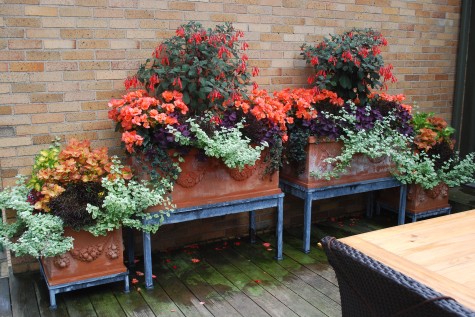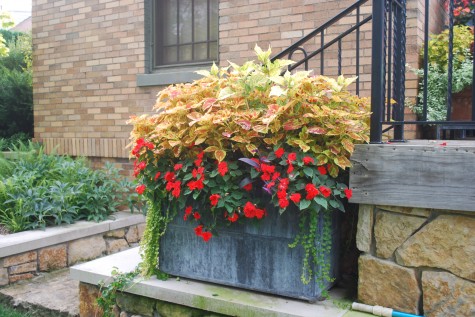 I spent the better part of this week walking from one end of my property to the other- watching Rob and a crew haul out everything he had ordered for spring, tear the entire existing space apart, and put it all back together. I could not even guess how many thousands of pounds of terra cotta, stone, wood, lead, were involved all told-but I would guess many. I thought his method was smart-everything got moved into the driveway lane, leaving each side ready to be cleaned up, and re-raked. Though our all over surface is compacted decomposed granite, it doesn’t feel like spring until it every vestige of last year gets raked out. Those of you who know of the late Allen Haskell-he took up, washed, and relaid all of the gravel in his nursery every spring. Think of it. Beyond relevelling the gravel, even more interesting was how he put things together.
I spent the better part of this week walking from one end of my property to the other- watching Rob and a crew haul out everything he had ordered for spring, tear the entire existing space apart, and put it all back together. I could not even guess how many thousands of pounds of terra cotta, stone, wood, lead, were involved all told-but I would guess many. I thought his method was smart-everything got moved into the driveway lane, leaving each side ready to be cleaned up, and re-raked. Though our all over surface is compacted decomposed granite, it doesn’t feel like spring until it every vestige of last year gets raked out. Those of you who know of the late Allen Haskell-he took up, washed, and relaid all of the gravel in his nursery every spring. Think of it. Beyond relevelling the gravel, even more interesting was how he put things together.
 I would not have a word for this, but for Pam. She designs, plants, and maintains gardens, so she has a point of view about it. She was telling me she admired another desgner she knows for her ability to “layer” in plants. By this she means plants are paired or grouped so while one is going quiet, another is coming on. Daffodils with daylilies, or oriental poppies with phlox, or phlox with Japanese anemone. Skilled perennial garden designers are adept at arranging plants to avoid what I call a gaposis. I like treating these perennial spaces with big growing annuals, but some like to handle this perennially. A large clump of oriental poppies going dormant is not such a pretty sight-something needs to be coming on strong in the spot in front of that poppy-otherwise a gaposis.
I would not have a word for this, but for Pam. She designs, plants, and maintains gardens, so she has a point of view about it. She was telling me she admired another desgner she knows for her ability to “layer” in plants. By this she means plants are paired or grouped so while one is going quiet, another is coming on. Daffodils with daylilies, or oriental poppies with phlox, or phlox with Japanese anemone. Skilled perennial garden designers are adept at arranging plants to avoid what I call a gaposis. I like treating these perennial spaces with big growing annuals, but some like to handle this perennially. A large clump of oriental poppies going dormant is not such a pretty sight-something needs to be coming on strong in the spot in front of that poppy-otherwise a gaposis.
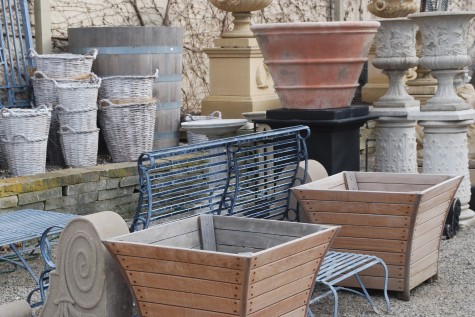 I think this is a good description of how Rob has arranged the outdoor spaces. He packed materials in close quarter that seemed to like each other or play off each other. In this case, the steel striped bench echo the wood stripes; its scrolls recalls the scrolling corbel detail. Surfaces and colors are different, but friendly. Lots of materials and styles are represented here. His arrangement is a conversation about choices.
I think this is a good description of how Rob has arranged the outdoor spaces. He packed materials in close quarter that seemed to like each other or play off each other. In this case, the steel striped bench echo the wood stripes; its scrolls recalls the scrolling corbel detail. Surfaces and colors are different, but friendly. Lots of materials and styles are represented here. His arrangement is a conversation about choices.
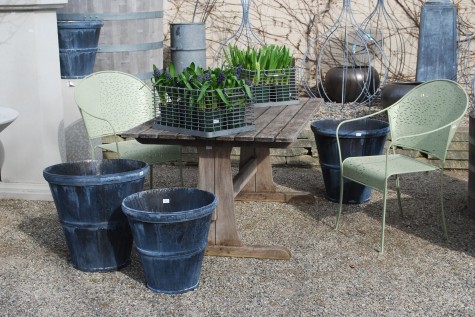
Contemporary garden ornament can include a wide range of objects. This early twentieth English wood trestle table is clean lined enough to be quite comfortable with some galvanized steel wire crates, and some painted French garden chairs. The round acid washed steel pots are finished with a nod to traditional forms, but have a subtly more modern shape.
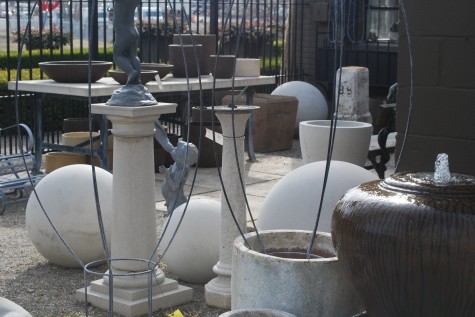 This space is densely populated. On the table, below the table, in the air, on the ground-everywhere you look, something is going on. I am surprised how amiable the contemporary limestone balls are to the modern lead sculptures of classical design. I do not see any argument about to erupt. I suppose any object for a garden implies that partnership-all of these things have a landscape to come in common. Maybe this accounts for how they all get along.
This space is densely populated. On the table, below the table, in the air, on the ground-everywhere you look, something is going on. I am surprised how amiable the contemporary limestone balls are to the modern lead sculptures of classical design. I do not see any argument about to erupt. I suppose any object for a garden implies that partnership-all of these things have a landscape to come in common. Maybe this accounts for how they all get along.
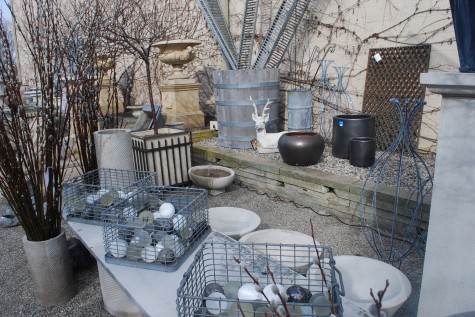 A pussy willow stem and a trench drain have almost nothing intrinsically in common. What they do share is how they are arranged in a similar V-shaped fashion. The color of the iron repeats the stems of the still dormant Boston ivy. What a different view will present itself once that wall is green. But given the early spring season, I like the bouquet shapes.
A pussy willow stem and a trench drain have almost nothing intrinsically in common. What they do share is how they are arranged in a similar V-shaped fashion. The color of the iron repeats the stems of the still dormant Boston ivy. What a different view will present itself once that wall is green. But given the early spring season, I like the bouquet shapes.
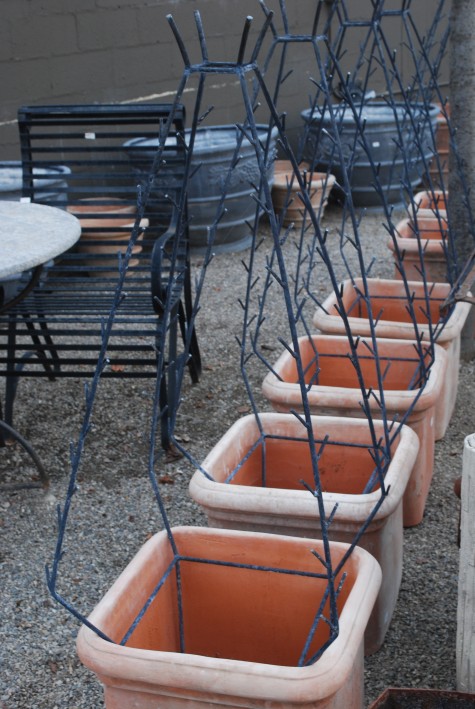 These steel tuteurs are Rob’s interpretation of some formally trimmed yews at Versailles. I have already been scheming about what could be planted inside them, that would still reveal the outer form. But it is the multiple forms in multiple pots that makes for such a big impact. The blue/grey and terra cotta color scheme is repeated in the background in a very rhythmic way, alternating pots of different shape and height.
These steel tuteurs are Rob’s interpretation of some formally trimmed yews at Versailles. I have already been scheming about what could be planted inside them, that would still reveal the outer form. But it is the multiple forms in multiple pots that makes for such a big impact. The blue/grey and terra cotta color scheme is repeated in the background in a very rhythmic way, alternating pots of different shape and height.
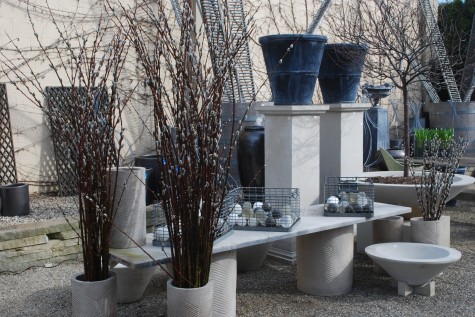 An arrangement of geometric shapes is so pleasing to the eye; the V-shapes in differing materials compliment that. The color is strikingly contrasting-black and white, with just a little in between. A restricted color palette is a modern gesture; the twigs soften this.
An arrangement of geometric shapes is so pleasing to the eye; the V-shapes in differing materials compliment that. The color is strikingly contrasting-black and white, with just a little in between. A restricted color palette is a modern gesture; the twigs soften this.
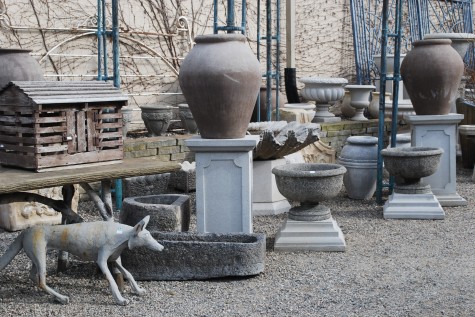
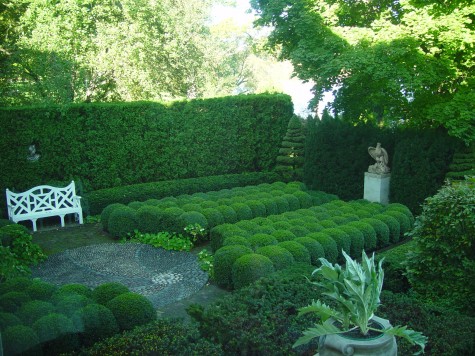
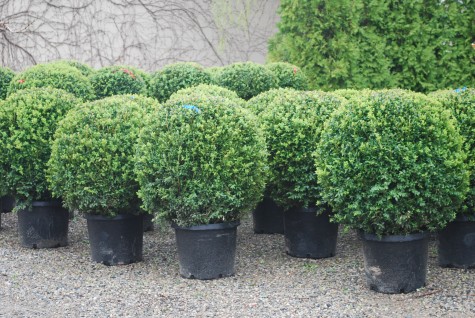



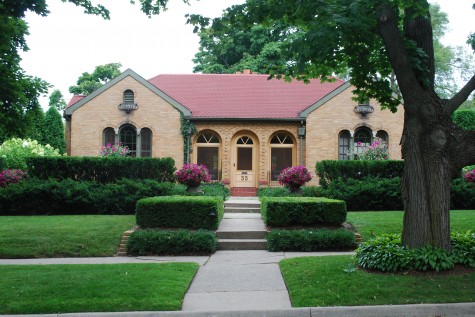

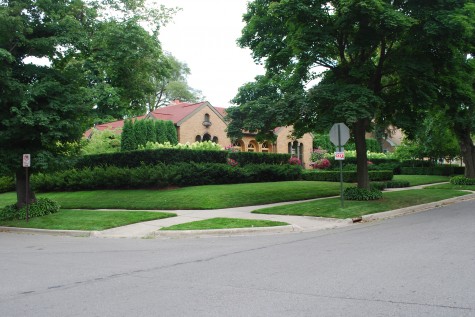


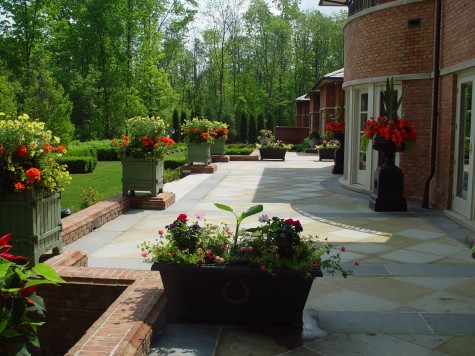
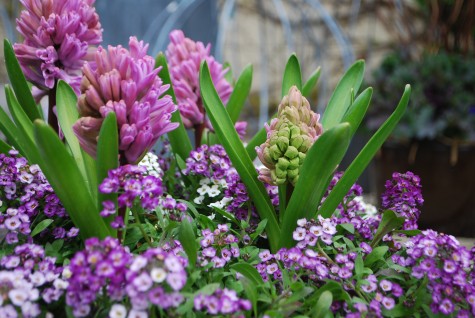

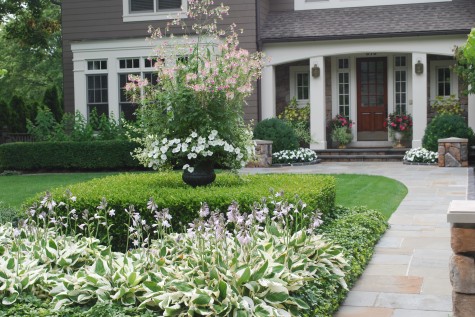
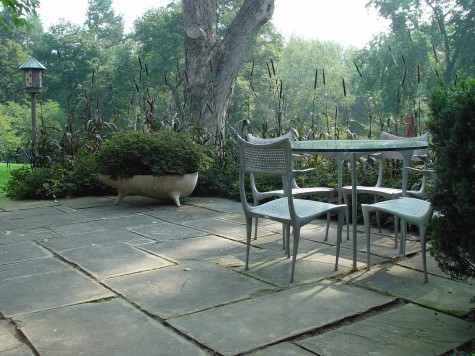
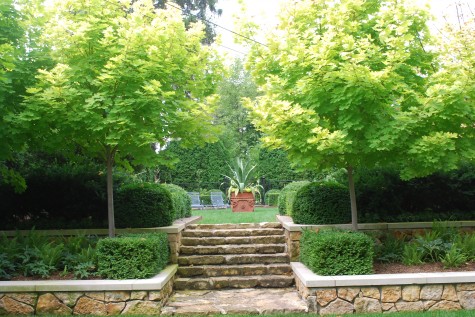
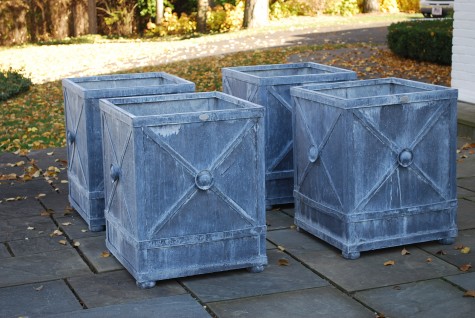
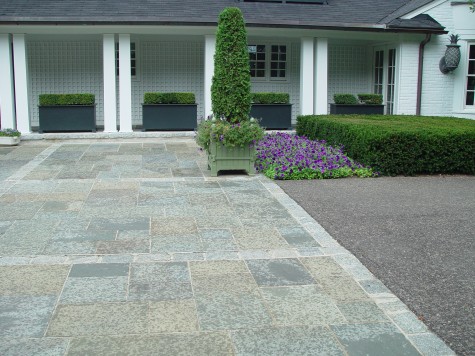
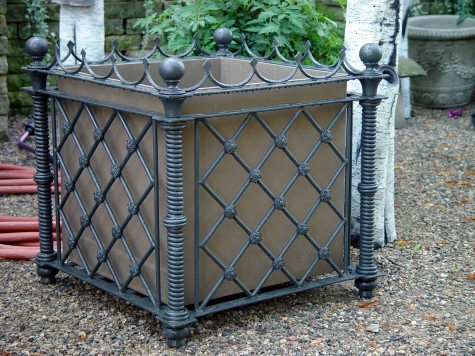

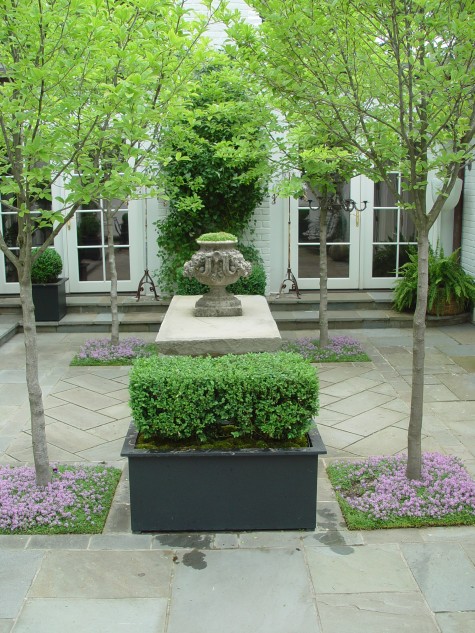
![37a1[1]](https://deborahsilver.com/wp-content/uploads/2010/05/37a11.jpg)
